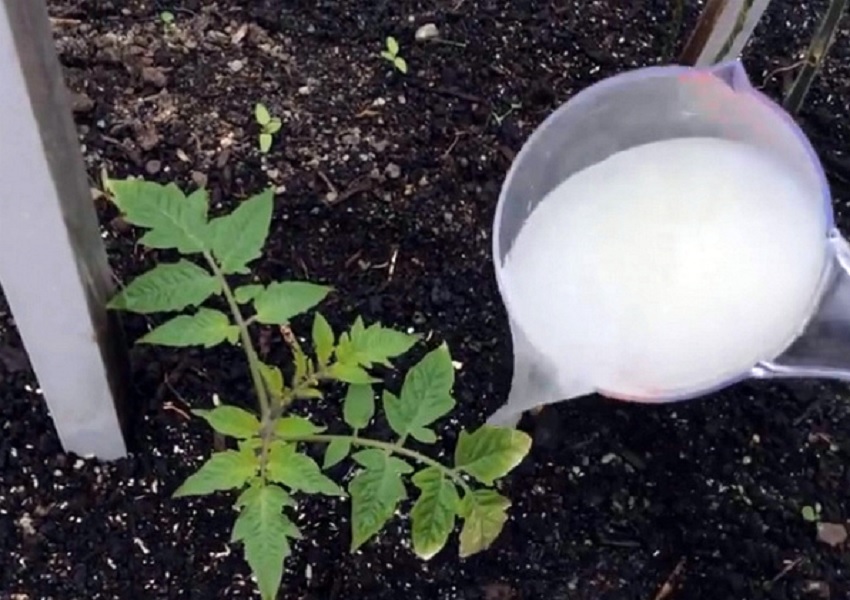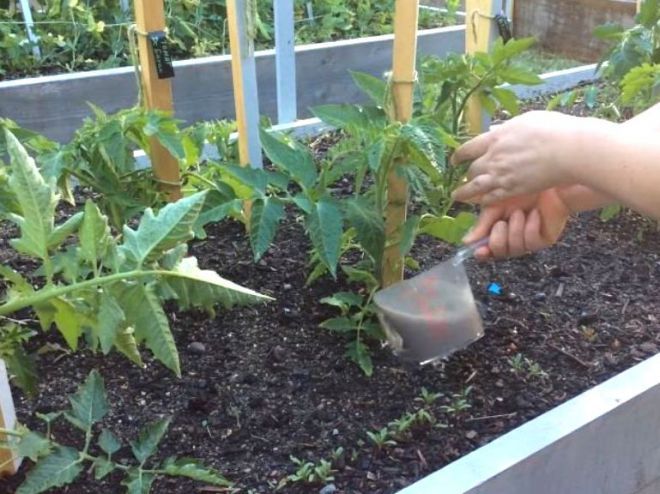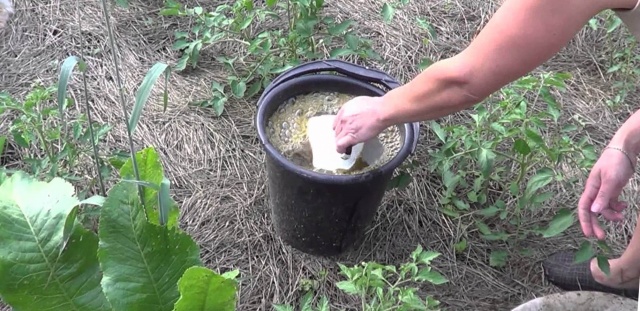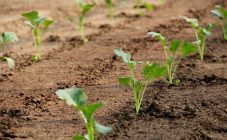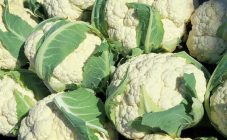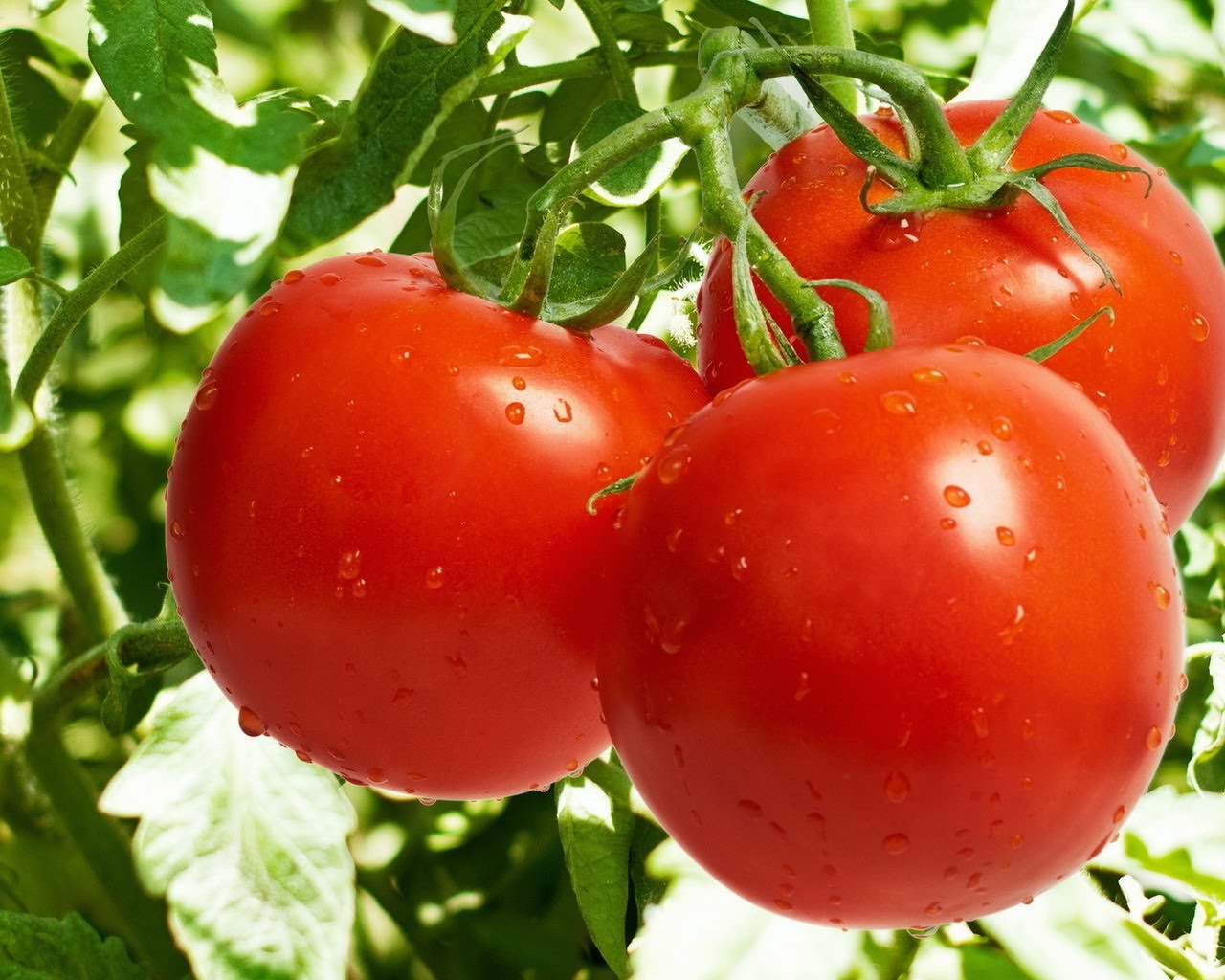Content:
Basic information about culture
In temperate climates, tomatoes grow best in greenhouses. In a greenhouse or greenhouse made of polycarbonate, it is easiest to create comfortable conditions, since tomatoes like stable high temperatures throughout the season. On the territory of Russia, the temperature is kept at + 25˚C and higher only in the southern region.
In addition to high temperatures, tomatoes like soft fertile soils with good water and air permeability, good illumination and moderate humidity of air and soil. With the correct organization of the basic needs of the crop, one can confidently expect a good development of green mass and a high-quality harvest.
If growing conditions are less than ideal, additional measures need to be taken. Top dressing of tomatoes in the greenhouse can significantly improve yield indicators. Seedlings grown on a windowsill are usually very tender and weak, therefore, after planting them in a permanent place, you have to take measures to adapt them.
How and what to feed tomatoes
Tomatoes are fed 10-14 days after planting in the greenhouse. In order to carry out all the stages of feeding in a timely manner, you can draw up a schedule and follow it. This eliminates the likelihood of a pass or extraordinary deposit. Also, with the help of the graph, you can monitor the components introduced, since, depending on the growth phase, tomatoes need different nutrients. There are 3 main groups of fertilizers: organic, mineral complex and folk remedies.
Top dressing of tomatoes in a greenhouse using folk methods
Yeast
Summer residents are sure that the main benefit of the yeast solution is to enhance growth and gain green mass. In fact, the benefit of yeast is that the beneficial bacteria contained in the composition, getting into the soil, kill the spores of pathogenic fungi.
To prepare top dressing, you need to take any yeast (10 g), warm water (0.5 l) and sugar (1.5 tsp), mix and leave to infuse for several hours. Before use, the resulting concentrate is diluted in 5 liters of water. Pour 0.5 liters of the finished solution under each plant. You can apply this fertilizer once every 2 weeks, alternating with other fertilizers.
Iodine
Iodine solution is the best fertilizer for tomatoes in the greenhouse. It makes the stems and leaves thicker. Consumption - 1 drop per 3 liters of water. For 1 plant, you need 0.4 l of the finished solution. During flowering and fruiting, iodine dressings are also very relevant, since they have a powerful stimulating effect. The concentration of iodine in the second and third feeding increases by 3 times for the same volume of water.
Herbal infusions
This tool can not only fertilize, but also mulch row spacings in the greenhouse. The most important thing is that when the entire composition is absorbed and the grass is repaired, it must be disposed of, since it will not be of any use in the future. To prepare the infusion, freshly cut grass is placed in a container and filled with water. The infusion is prepared right outside in the sun. After a few days, the fermentation process will begin, which will give rise to a characteristic smell. The finished infusion is rich in trace elements and vitamins. To fertilize young tomatoes in the greenhouse, the solution is poured along with the grass into the aisles.The grass acts as a mulching layer and protects the seedlings from pests.
Ammonia
This product contains a large amount of nitrogen in an easily digestible form. Tomatoes planted in a greenhouse will quickly gain green mass if they are poured with a solution of ammonia (2 tablespoons per 10 liters of water). Pour 50 ml of solution under each plant.
Fertilizing tomatoes in a greenhouse with organic fertilizers
Ash
It is recommended to use this tool at any stage of tomato growth. Summer residents often think about how to feed tomatoes after planting in a greenhouse so that they gain green mass faster. Nitrogen needs to be added, so ash is ideal for this purpose. The advantage of this fertilizer is that it is suitable for both root and foliar dressing.
In order for the plant to grow faster, it must be watered with an ash solution (1:10 with water). If the leaves of the plant begin to wither, then they can be treated with ash and a small amount of water to create a sticky texture.
Chicken droppings
There are several schemes for using this fertilizer. Firstly, the manure is used in the preliminary preparation of the soil in the fall and it is brought in pure (fresh or rotted). Secondly, a solution is made from it for watering seedlings after transplanting into a greenhouse. Breeding rates - 1 in 100 for fresh and 1 in 50 for rotted litter.
Mullein
Has the same effect and properties as litter. Manure in its pure form is laid in the fall when digging soil in the garden. Application rate - 6 kg / m2. To feed young seedlings, manure is diluted with water in a ratio of 1:10.
Compost
Compost feeding not only saturates the soil with all the necessary microelements, but also improves the structure of the soil, making it looser and more airy. The compost is suitable both for autumn feeding and for fertilizing seedlings after diving into the greenhouse. It can also be used dry, embedding it to a depth of 5 cm, the consumption rate is 4 kg / m2. You can prepare a slurry and water the seedlings with it. The compost is poured with water in a 2: 1 ratio and left under a lid for 3 days. If 2-3 stalks of nettle are added to the solution, then, in addition to nutrition, the plant will receive additional protection from diseases.
Mineral dressing
The main components that are needed for the normal development of the bush and the formation of fruits are potassium, phosphorus and nitrogen. Therefore, at the first feeding after transplanting, a solution consisting of 25 g of a nitrogen component, 40 g of a phosphoric component and 15 g of a potassium component per 10 liters of water must be added to the greenhouse. Sulphates should be preferred. In gardening shops, a wide range of ready-made mineral complexes is presented, which, in addition to the main components, are enriched with iron, zinc, boron and other important trace elements. In the absence of the necessary experience in preparing solutions, you can purchase ready-made dressings and dilute them, according to the instructions on the package.
The fertilizer nitrophoska is in great demand. Its composition is very suitable for tomatoes, therefore, the use of this dressing is relevant from the moment of sowing to the formation of fruits. It also protects tomatoes from fungus.
To get sweeter and richer fruits in taste, which will also be very fleshy inside, you need to spray the ground part of the tomatoes with boron. Watering with boron solution is less effective, since the active ingredients are absorbed longer through the roots. During the season, it is enough to make just one spraying of the product during the period of mass flowering and this will be enough to qualitatively improve the yield.
If after transplanting the seedlings have stopped growing, then it can be treated with a growth stimulant - Immunocytophyte, which not only activates growth, but also protects the seedlings from fungus.
Pests and diseases
Tomatoes, like other nightshades (peppers, potatoes), are most often exposed to late blight. Also, a common problem with young shoots is the black leg. Less commonly, tomatoes are infected with various types of rot and spotting. It should be borne in mind that fungal spores are to a greater or lesser extent contained in any type of soil. They can begin to spread when the rules of maintenance and care are violated. Excessive watering, oversaturation with nitrogen fertilizers, drafts, thickening of plantings, temperature drops - all these factors affect the reproduction of the fungus.
To prevent the disease, you need to choose the right seed that has immunity against the fungus. As a preventive measure, the seeds can be treated before sowing. A simple and effective method is etching in a 1% solution of potassium permanganate for 10-15 minutes. Treatment with chemistry is suitable as disinfection, in particular, Fitosporin-M or Baikal-Em. After disinfection treatment, the seeds can be tied into the ground, they will be completely protected from all infections. If preventive measures were not taken, and the fungus appeared on the seedlings, it is necessary to dry and loosen the soil, remove the affected plants and carry out antifungal treatment. The soil is disinfected with a solution of copper sulfate or Bordeaux liquid. The ground part of the plants is sprayed with chemicals: Fitosporin-M, Fitolavin and Trichodermin-300.
Summer residents often puzzle over how to feed tomatoes when planting in a greenhouse. There are many fertilizer options. Which one to choose depends primarily on the condition of the soil. The optimal choice is the alternation of the mineral complex and organic matter. Folk remedies are good as complementary food. It is better not to use chemicals without a strong need, since all the same, these funds are harmful to the environment and the body.
